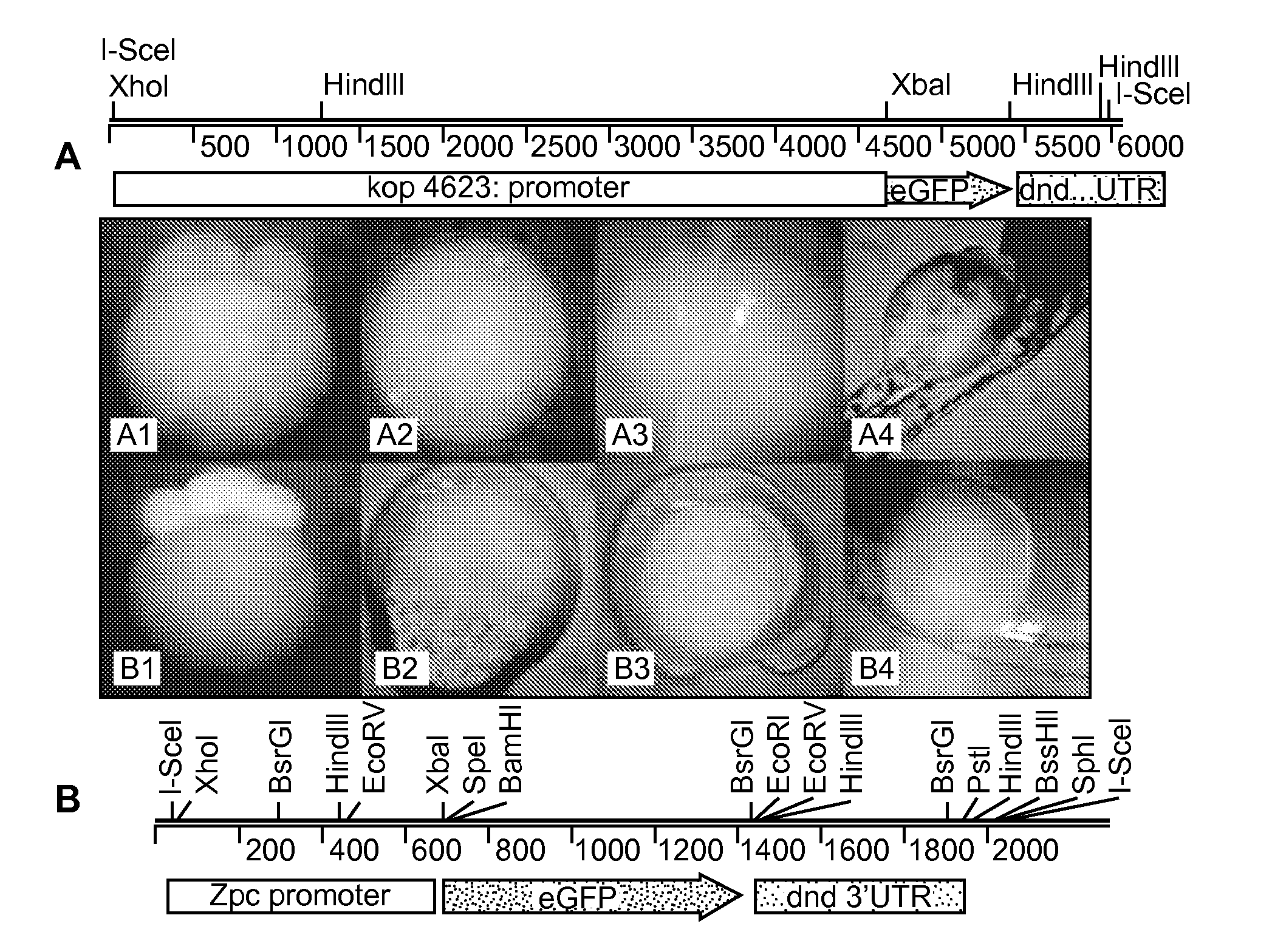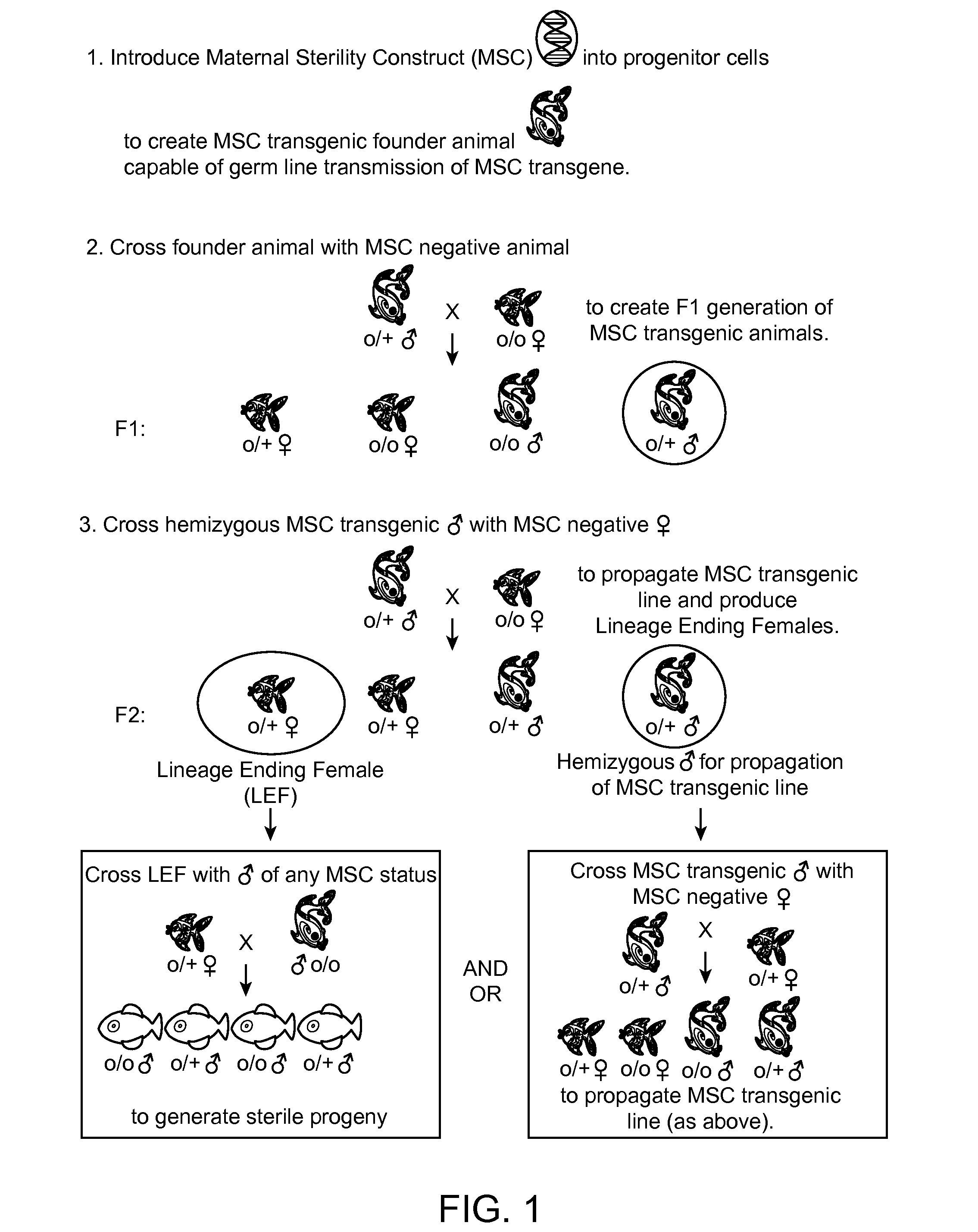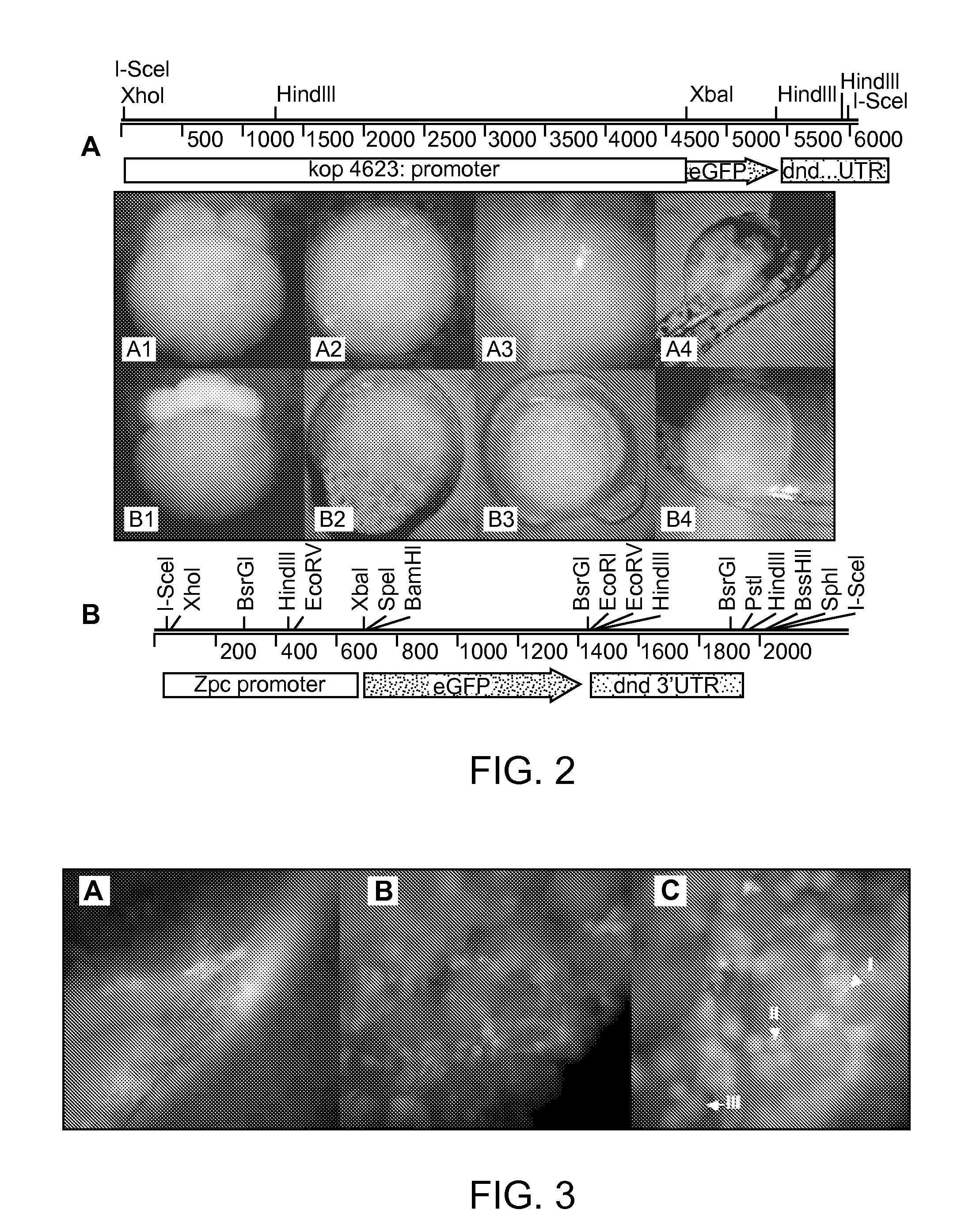Maternally induced sterility in animals
a technology of sterility and motherhood, applied in the field of motherhood induced sterility in animals, can solve the problems of marked depletion or eradication within a few generations, insufficient promotion of oocyte apoptosis, inhibiting the productive translation of mrnas,
- Summary
- Abstract
- Description
- Claims
- Application Information
AI Technical Summary
Benefits of technology
Problems solved by technology
Method used
Image
Examples
example 1
Proof of Principal using Zebrafish
[0128]To evaluate the functionality of the Maternal Sterility Construct (MSC) and document ablation of PGCs in a model organism, we created transgenic zebrafish that produce bax-dnd 3′UTR RNA under the control of either a zona pellucida or askopos oocyte-specific promoter (FIG. 5A). If the maternally contributed bax-dnd 3′UTR RNA is expressed during oogenesis and remains present in the eggs, the embryonic development will result in individuals that lack germ cells. The result will be a sterile generation, or what can be called a grandchildless phenotype.
[0129]To ablate PGCs, we relied on the activation of the intrinsic apoptotic machinery by ectopic over-expression of the zebrafish pro-apoptotic gene bax. Bax belongs to a family of key protein regulators of apoptosis (Bcl-2 family (van Delft & Huang (2006) Cell Res. 16:203-13)) that contain both anti-apoptotic (e.g., Bcl-2 and Bcl-XL) and pro-apoptotic (e.g., Bax, Bik, Bad) members. The ratio of the...
example 2
Germ Line Transmissible Transgenic Zebrafish
[0133]We next created transgenic zebrafish carrying our two maternal sterile constructs, zpc:zbax:dnd (MSCzpc) and kop:zbax:dnd (MSCkop) (FIG. 5A). The vectors were injected into two batches of 200 fertilized eggs. A 60-70% survival rate was recorded three days after microinjection. At one month of age the surviving embryos (˜50%) were fin clipped to detect individuals carrying the transgene. Out of 66 and 80 fish screened, 25 (37%) and 34 (42%) were tested positive for the MSCkop and MSCzpc transgenes, respectively. The remaining PCR positive fish were raised to sexual maturity, sexed, and identified males were crossed with wild-type female broodstock to determine their ability to transmit the construct to their progeny. Of the 11 and 13 males screened for MSCkop and MSCzpc respectively, 2 and 4 produced at least one clutch of PCR positive embryos (3 clutches of 7 embryos were screened for each parental pair).
[0134]These 6 male founders c...
example 3
Confirmation of PGC Ablation in F2 Developing Embryos
[0135]A maximum of 3 F1 males and 3 F1 females per line were used to establish lineages. F2 embryos derived from females carrying both GFP and MSC transgenes were analyzed by fluorescent microscopy and PGC numbers (i.e. GFP positive cells) were recorded at 24 and 48 hours post fertilization (hpf). If the transgenes are indeed under specific maternal expression, we expect F1 MSC females to produce embryos with reduced or absent PGCs, relative to control embryos (i.e. those produced by female GFP broodstock). More than 90% and 70% respectively of all embryos from F1 females of MSCzpc22 and MSCzpc9 lines completely lacked visible GFP+ cells. In contrast, F1 females from lines MSCzpc11 and MSCzpc3 produced only 5-10% of embryos with no detectable GFP+ cells. The three F1 Females of line MSCkop2 also produced 30-80% of embryos with no GFP+ pattern. Furthermore, all other embryos produced by GFP MSC females had PGCs number ranging from ...
PUM
| Property | Measurement | Unit |
|---|---|---|
| Fraction | aaaaa | aaaaa |
| Fraction | aaaaa | aaaaa |
| Fraction | aaaaa | aaaaa |
Abstract
Description
Claims
Application Information
 Login to View More
Login to View More - R&D
- Intellectual Property
- Life Sciences
- Materials
- Tech Scout
- Unparalleled Data Quality
- Higher Quality Content
- 60% Fewer Hallucinations
Browse by: Latest US Patents, China's latest patents, Technical Efficacy Thesaurus, Application Domain, Technology Topic, Popular Technical Reports.
© 2025 PatSnap. All rights reserved.Legal|Privacy policy|Modern Slavery Act Transparency Statement|Sitemap|About US| Contact US: help@patsnap.com



